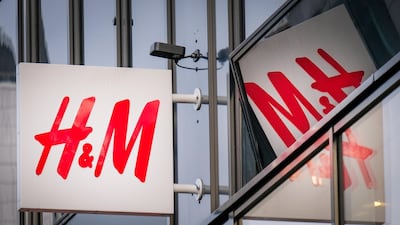Sweden's H&M cautioned on Wednesday that sales from its existing stores would continue to fall this year even as booming e-commerce should help lift earnings.
After decades of rapid expansion, the world's second largest clothes retailer behind Zara-owner Inditex has seen sales growth stall in recent years as it has struggled to adapt to the shift online and fend off competition from other budget brands.
A secretive company still controlled by the family of Erling Persson who founded the company in 1947, H&M held its first-ever capital markets day on Wednesday in a bid to reassure investors, stung by a halving of the share price since March 2015.
"We understand the need to be more transparent," chairman Stefan Persson, the founder's son, told investors assembled in downtown Stockholm. "Especially since we have had a challenging year ... where we have underperformed both against our own plans and of course market expectations."
The stock initially rose on Wednesday but then reversed course, falling 2.4 per cent by 10.06am GMT, increasing its discount to Inditex, which was up 1.2 per cent.
"Some had hopes for at least some like-for-like sales growth in 2018, but no,” said one fund manager, who declined to be identified.
H&M forecast growth of at least 25 per cent in online sales and in its new brands such as COS and H&M Home in 2018, but said sales from existing stores would fall further, noting a tough start due to high stock levels and problems with its ranges.
By contrast, Inditex said sales at its more than 7,500 stores and online increased 13 per cent at constant exchange rates between November 1 and December 11.
H&M has invested heavily in digitalisation to catch up with the likes of online-only players like Asos and Zalando . It now offers e-commerce in 43 of its 69 markets, while Inditex is online in 45 of its 94 markets.
However, Inditex has a more flexible supply chain that has allowed it to better integrate its stores and websites than H&M, enabling in-store deliveries and returns of online orders that its Swedish rival has been slower to introduce.
Portfolio manager John Hernander at Nordea, a top-10 H&M shareholder, said: "Given the negative surprises in the past quarters, H&M probably needs to show that the trend has changed before the stock comes into a positive trend for real, but the information today signals a more forward-looking H&M."
H&M said it expected "somewhat better" pre-tax earnings for the 2017/18 financial year. Analysts had been expecting a pre-tax profit of 19.9 billion Swedish kroner (Dh9.08bn) this fiscal year, according to Reuters, down from a 20.8bn Swedish kroner profit in the 2016/17 fiscal year.
H&M said it expects physical stores to return to comparable growth from 2019 onwards, with considerably lower price markdowns, although there could still be a "slight increase" in markdowns in the 2017/18 fiscal year.
It also forecast online sales of 75bn kroner in 2022, up from 29bn kroner in 2016/17, and new brands to achieve sales of 50bn kroner in 2022, up from 17bn kroner in 2016/17.
"Overall, this is expected to lead to good increases in profit," said chief executive Karl-Johan Persson, the founder's grandson.
The group said its online channel accounted for 12.5 per cent of total sales in 2016/17, but 22 per cent of operating profit.
H&M, which has said it will close some stores in mature markets in regions such as Europe, said it expected newly opened stores to increase sales for the group by between 1 and 3 per cent in the 2019 to 2022 period.
It also held out the prospect of additional growth from two "completely new business models" it is working on, without elaborating.

